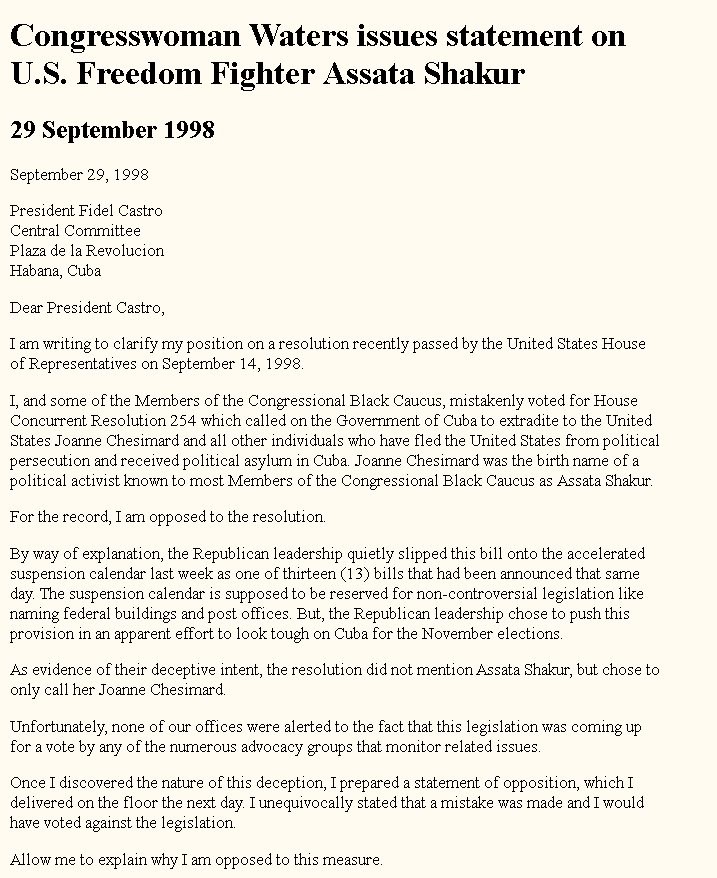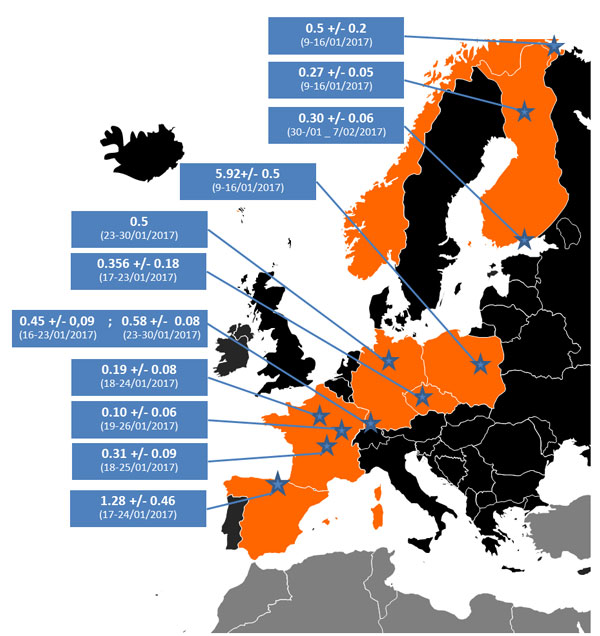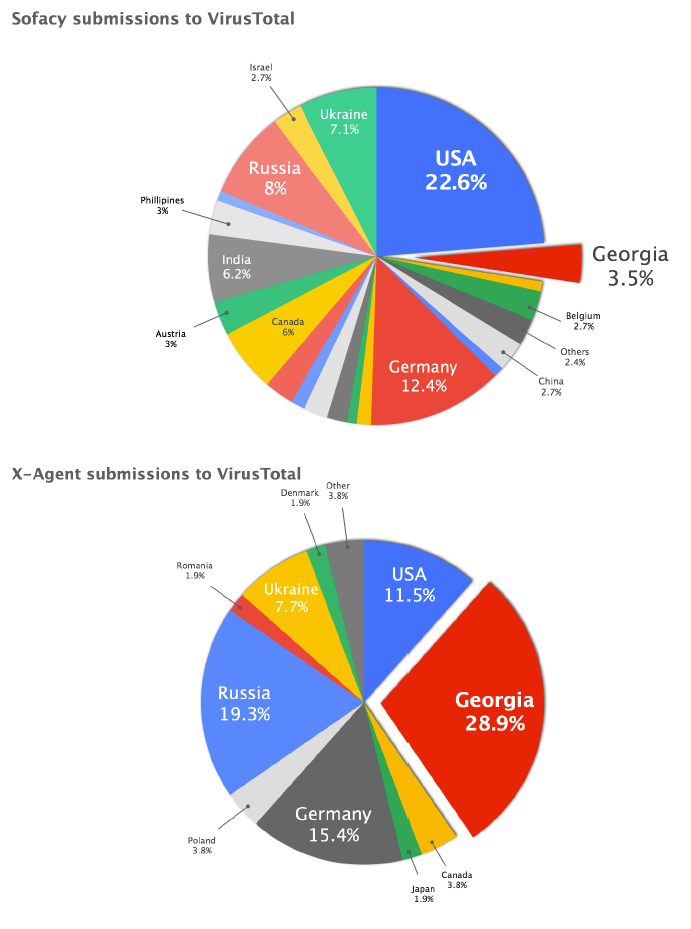

What Congresswoman Maxine Waters neglected to mention in her letter to Fidel Castro was the resolution by the 105th Congress in 1998. Read the two page document here. In the end, Waters is cool with prison escape and murder? Further, Governor Christie of New Jersey wrote a letter to then president Barack Obama in 2014 asking that he demand extradition of Joanne Chesimard, which too went unheeded. Maybe we should ask Maxine about her thoughts on the Black Liberation Army, as in 1979, members of the Black Liberation Army helped Chesimard break out of prison.
Act of Terrorism – Domestic Terrorism; Unlawful Flight to Avoid Confinement – Murder
DESCRIPTION 
Aliases: Assata Shakur, Joanne Byron, Barbara Odoms, Joanne Chesterman, Joan Davis, Justine Henderson, Mary Davis, Pat Chesimard, Jo-Ann Chesimard, Joanne Debra Chesimard, Joanne D. Byron, Joanne D. Chesimard, Joanne Davis, Chesimard Joanne, Ches Chesimard, Sister-Love
Chesimard, Joann Debra Byron Chesimard, Joanne Deborah Byron Chesimard, Joan Chesimard, Josephine Henderson, Carolyn Johnson, Carol
Brown, “Ches”
Date(s) of Birth Used: July 16, 1947, August 19, 1952 Place of Birth: New York City, New York
Hair: Black/Gray Eyes: Brown
Height: 5’7″ Weight: 135 to 150 pounds
Sex: Female Race: Black
Citizenship: American Scars and Marks: Chesimard has scars on her chest, abdomen, left
shoulder, and left knee.
REWARD
The FBI is offering a reward of up to $1,000,000 for information directly leading to the apprehension of Joanne Chesimard.
REMARKS
Chesimard may wear her hair in a variety of styles and dress in African tribal clothing.
CAUTION
Joanne Chesimard is wanted for escaping from prison in Clinton, New Jersey, while serving a life sentence for murder. On May 2, 1973,
Chesimard, who was part of a revolutionary extremist organization known as the Black Liberation Army, and two accomplices were stopped
for a motor vehicle violation on the New Jersey Turnpike by two troopers with the New Jersey State Police. At the time, Chesimard was wanted
for her involvement in several felonies, including bank robbery. Chesimard and her accomplices opened fire on the troopers. One trooper was
wounded and the other was shot and killed execution-style at point-blank range. Chesimard fled the scene, but was subsequently
apprehended. One of her accomplices was killed in the shoot-out and the other was also apprehended and remains in jail.
In 1977, Chesimard was found guilty of first degree murder, assault and battery of a police officer, assault with a dangerous weapon, assault
with intent to kill, illegal possession of a weapon, and armed robbery. She was sentenced to life in prison. On November 2, 1979, Chesimard
escaped from prison and lived underground before being located in Cuba in 1984. She is thought to currently still be living in Cuba.
SHOULD BE CONSIDERED ARMED AND DANGEROUS
If you have any information concerning this person, please call the FBI Toll-Free tip line at 1-800-CALL-FBI (1-800-225-5324). You may also
contact your local FBI office , or the nearest American Embassy or Consulate.
Field Office: Newark





 Techviral
Techviral
 Russian embassy Washington DC
Russian embassy Washington DC


